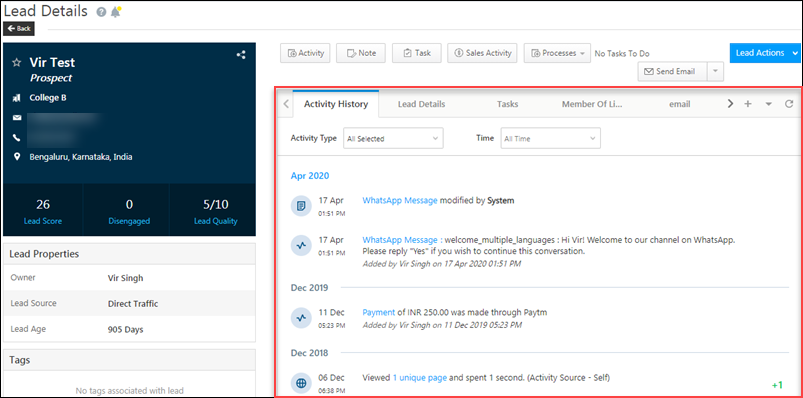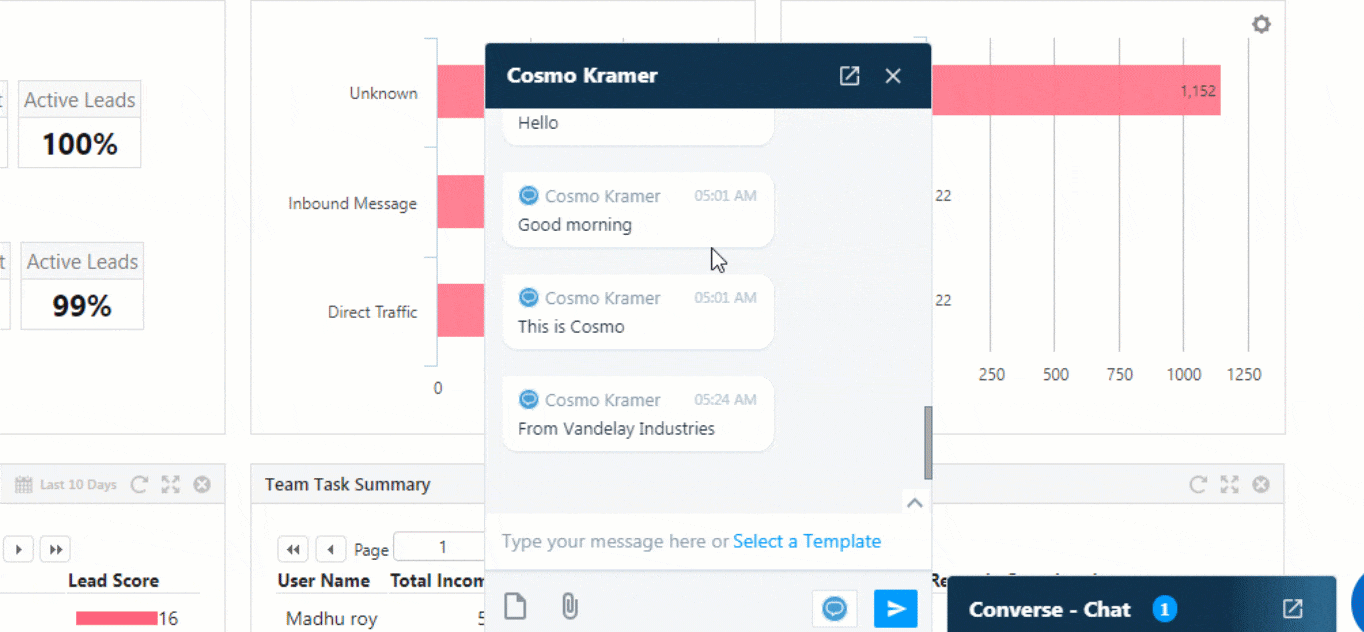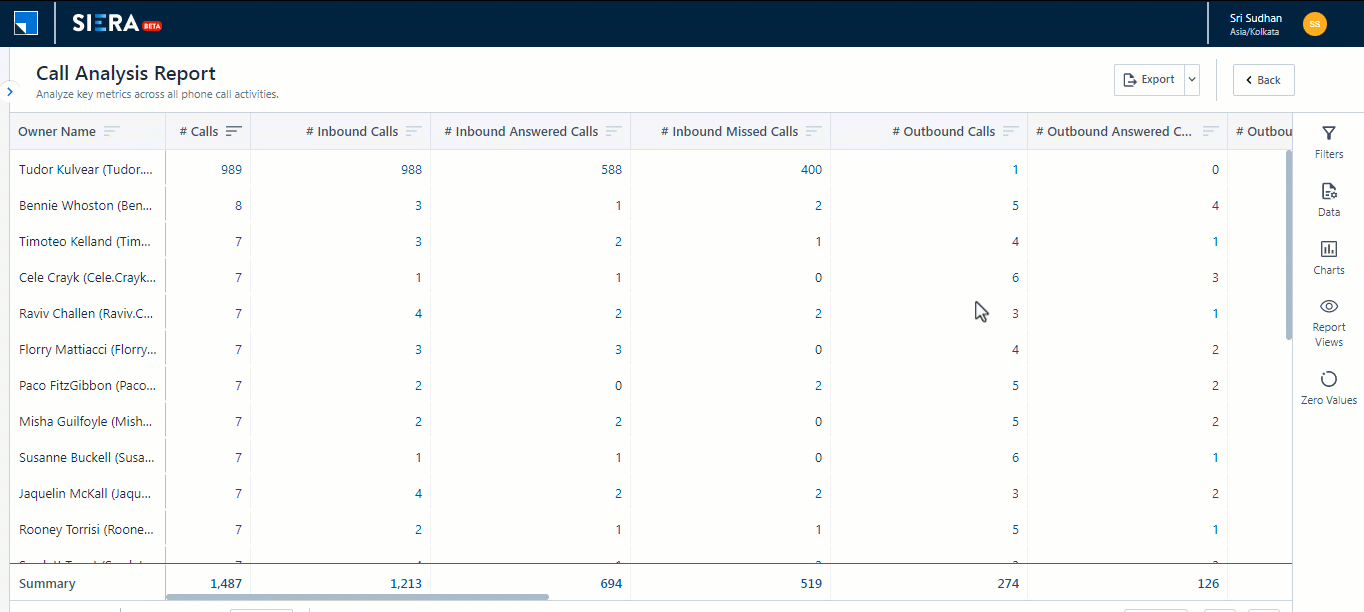Speed is crucial, especially when it comes to lead response time and nurturing leads.
Studies show that 78% of B2B buyers in the US expect a response within an hour of contacting a company. However, many businesses struggle with slow lead response times, which can severely impact their sales pipeline.
Fortunately, there are ways to improve your lead response time and convert more leads into customers.
Read on to explore ten practical ways to reduce your lead response time and boost your conversion rates. By implementing these strategies, you can ensure your business stands out in a fast-paced market and effectively nurtures potential customers.
10 Practical Tips to Improve Lead Response Time
Here are ten practical tips to improve lead response time and enhance your sales performance:
1. Leverage a Lead Management System (LMS)
If you had a central hub where all your leads are organized, automatically routed to the right rep, and easily tracked, that would be incredible—that’s the power of an LMS.
For instance, a potential customer reaches out via email, fills out a form on your website, and sends a message on social media. All within minutes!
With leads scattered across different platforms, response times suffer. Streamline the process by consolidating lead sources into a single, unified system like LeadSquared, which helps your team easily track and manage all inquiries in one place.

Such platforms significantly improve lead response by automating tasks and streamlining communication.
2. Identify your lead sources
Not all leads are created equal. Understanding where your leads come from (website form, social media, etc.) helps prioritize responses. For instance, website inquiries might be hotter than general email blasts, requiring a faster response.
- Website inquiries: Leads generated through website forms often indicate a high level of interest. These potential customers have taken specific action to learn more about your product or service. Aim to respond to website inquiries within minutes to capitalize on this initial enthusiasm.
- Social media leads: Interactions on social media platforms like Facebook or Twitter require a fast response. Many social media users expect near-instantaneous communication. Consider dedicating a team member to monitor and respond to social media inquiries in real time.
- Email list leads: Leads captured through email signups or general contact forms might be at an earlier stage in the buying journey. However, they still deserve a prompt response. Aim to respond to email inquiries within hours, demonstrating your responsiveness and professionalism.
- Cold calls: While cold calling can be an effective lead generation strategy, response times are typically less critical. However, following up promptly on any expressed interest during the call can increase your chances of converting the lead.
3. Set clear expectations
Let your potential customers know how long they can expect to wait for a response. A simple message on your website or contact form can manage expectations and build trust. Here are a few ways to set clear expectations:
- Website messaging: Include a message on your website contact form or FAQ page stating your typical response timeframe.
- Autoresponder emails: Set up an autoresponder email that acknowledges receipt of their inquiry and provides an estimated timeframe for a more detailed response.
- Social media bios: Some social media platforms allow you to include a response time estimate in your profile bio.
4. Embrace automation for simple inquiries
Use email autoresponders to acknowledge leads immediately and provide basic information. This frees up your team to focus on more complex inquiries.
Here are some examples of automated responses:
- Thank you email: Upon receiving a lead from any source, send an automated ‘Thank You’ email acknowledging their inquiry and confirming receipt.
- Frequently Asked Questions (FAQ) response: Develop automated email responses to common questions. This can save your team time while providing valuable information to leads early in the buying journey.
- Next steps email: For more complex inquiries, an automated email can outline the next steps, such as assigning a dedicated sales rep or providing a link to a relevant resource.
5. Equip your sales team for mobile response
Many leads come in through mobile devices. Ensure your sales reps have access to the tools and information they need to respond promptly, even on the go.
Here’s how:
- Mobile CRM applications: Invest in a Customer Relationship Management (CRM) system with a user-friendly mobile app. This allows reps to access lead information, track interactions, and respond to inquiries directly from their smartphones or tablets.
- Offline functionality: Ensure your mobile CRM offers offline functionality. This empowers reps to review lead details and prepare responses even when they have a weak internet connection.
- Push notifications: Enable push notifications to alert reps to new leads or urgent messages, allowing them to respond promptly even while they’re on the go.
6. Utilize chatbots for initial engagement
Chatbots can be a great way to have a virtual ‘sales assistant’ answer basic questions and qualify leads 24/7.
LeadSquared’s Converse, a NLP-powered chat platform enables reps to create and save templates and reduce efforts in typing in those messages.

This keeps the conversation going while freeing up your reps for more qualified prospects. It’s a valuable tool to:
- Provide 24/7 availability: They can answer basic questions, gather initial information from leads, and schedule appointments outside of regular business hours. This keeps the conversation going and demonstrates responsiveness, even when your sales team is unavailable.
- Qualify leads: Chatbots can be programmed to ask qualifying questions and route leads based on their responses. This frees up your sales reps from unqualified inquiries and allows them to focus on nurturing high-potential leads.
- Schedule meetings: They can automate tasks like scheduling initial consultations or demos, streamlining the lead nurturing process.
7. Train your sales team on effective communication
Even the fastest response is useless without a well-crafted message. Train your sales team on crafting concise and informative responses that address the lead’s needs. Effective communication goes beyond just sending a message.
Also, train your team to actively listen to the lead’s questions or concerns and tailor their responses accordingly. And equip your reps with the skills to address potential objections promptly and effectively. This can help keep the conversation moving forward and increase your chances of converting the lead.
8. Track and analyze your lead response time
Metrics are key to improvement. Regularly track your lead response time and identify areas for improvement. Tools like LeadSquared can provide valuable insights into the calls made, calls connected, accounts engaged, etc.

Here’s how metrics can be a powerful tool:
- Identify bottlenecks: Analyzing lead response times can reveal bottlenecks in your process. For example, high response times for social media inquiries might indicate a need for dedicated social media monitoring.
- Benchmarking: Compare your response times against industry benchmarks to understand your competitive edge or identify areas for improvement.
- Track progress over time: Monitor your lead response time over time to gauge the effectiveness of the strategies you’ve implemented.
9. Set realistic goals and hold your team accountable
Establish clear goals for lead response time and track your team’s progress. A little healthy competition can also be a great motivator.
Establish specific, Measurable, Achievable, Relevant, and Time-bound goals for lead response time. For example, aiming to reduce your average response time from 8 hours to 4 hours within the next quarter is a SMART goal.
Regularly monitor your team’s progress towards your goals. Recognize and reward individual or team achievements to maintain motivation.
10. Don’t forget the human touch
While automation is powerful, remember that people still buy from people. Personalize your communication whenever possible to build trust and rapport.
Don’t let automation replace human interaction. Train your sales reps to actively listen to leads, understand their concerns, and respond in a way that builds trust and rapport.
A well-timed phone call can be a powerful tool to connect with leads on a deeper level and build rapport. This is especially important for high-value leads or those expressing strong interest.
Final Words
By implementing these ten practical strategies, you can dramatically reduce your lead response time and give your sales team a significant edge in today’s competitive market. The faster you connect with potential customers, the higher your chances are of turning them into loyal customers.
Want to take your lead response time to the next level? Explore how LeadSquared’s powerful lead management system can streamline your sales process and boost your conversions.
Visit us today to learn more!







